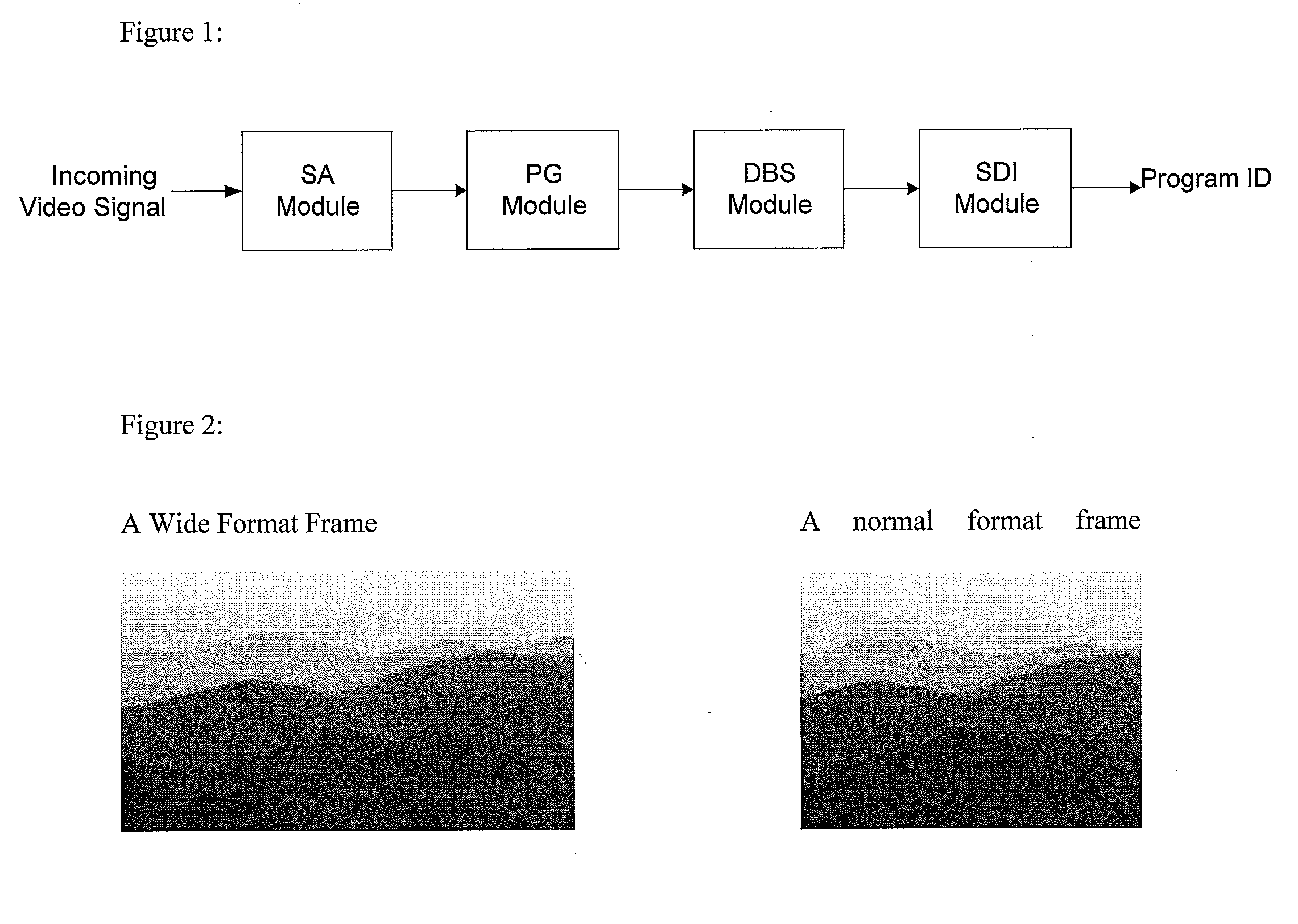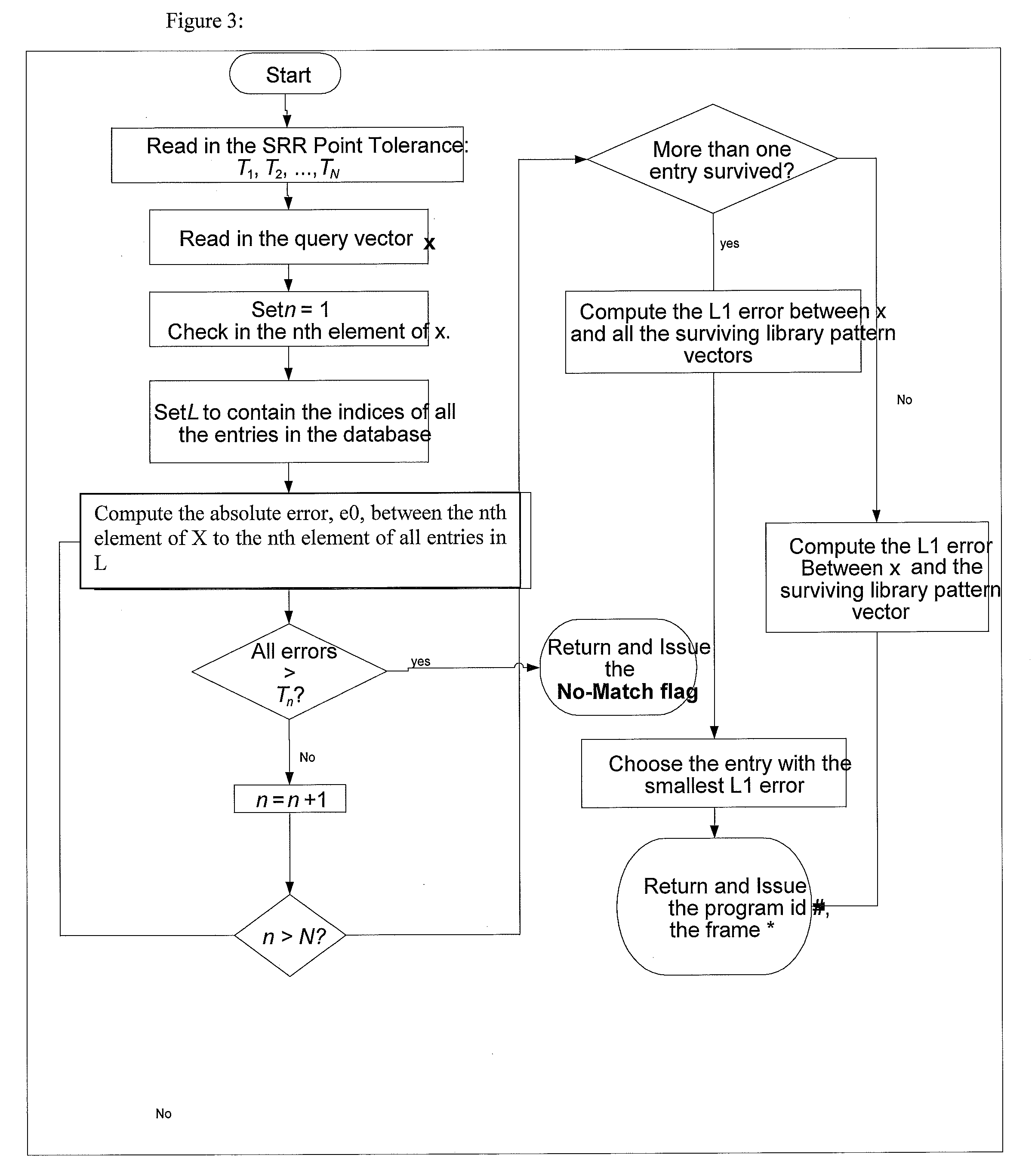Method and apparatus for automatic detection and identification of unidentified video signals
a video signal and automatic detection technology, applied in the field of automatic detection and identification of broadcast programming, to achieve the effect of reducing the rate of false positives and increasing the correct detection ra
- Summary
- Abstract
- Description
- Claims
- Application Information
AI Technical Summary
Benefits of technology
Problems solved by technology
Method used
Image
Examples
Embodiment Construction
A. Overview
[0022]The broadcast monitoring and detection system embodying the invention works in two phases: registration and detection. During the registration phase, known programming content is registered with the system by sending the program, as digital data, into the system. A series of signatures, in the case here, a pattern vector also referred to as a “fingerprint” or “signature”, are stored as a sequence of data records in a database, with the identity of the program content cross-referenced to them as a group. During the second phase, unidentified programming is input into the system. Such programming can include video programming, whether terrestrial broadcast, satellite, internet, cable television or any other medium of delivery, whether now known or devised in the future. While such programming is being monitored, the pattern vectors of the programming (or any other signature generating technique) are continually calculated. The calculated pattern vectors are then used ...
PUM
 Login to View More
Login to View More Abstract
Description
Claims
Application Information
 Login to View More
Login to View More - R&D
- Intellectual Property
- Life Sciences
- Materials
- Tech Scout
- Unparalleled Data Quality
- Higher Quality Content
- 60% Fewer Hallucinations
Browse by: Latest US Patents, China's latest patents, Technical Efficacy Thesaurus, Application Domain, Technology Topic, Popular Technical Reports.
© 2025 PatSnap. All rights reserved.Legal|Privacy policy|Modern Slavery Act Transparency Statement|Sitemap|About US| Contact US: help@patsnap.com



